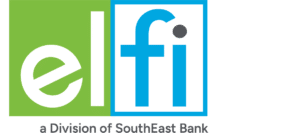Bank of America, one of the largest financial institutions in the country, stopped providing private student loans in 2008 and federal student loans in 2010. Since that time, all federal student loans have been issued through the Department of Education as part of a congress-led revamping of the student loan landscape.
While federal loans were off the table, Bank of America joined other major banks, like JP Morgan Chase, CapitalOne, and US Bank to stop issuing private student loans as well.
So, what happens to your Bank of America Student Loan now? Who is servicing your loan? Can it be refinanced with another bank?
Bank of America Student Loan Refinancing: An Overview
While some national banks (like Citizens Bank and First National Bank) still issue private student loans, there are a number of community banks, credit unions, and online loan companies that offer refinancing for student loans.
If you have Bank of America student loans (or any student loans) that are in good standing, you may be eligible to refinance them to a lower interest rate and save money.
But first, you need to know who is servicing your loans. You can find that out by reviewing your credit report (for private loan servicer information) or by visiting studentaid.gov and entering your Federal Student Aid ID number (FSA ID). You can also visit the National Student Loan Data System (NSLDS) with the Department of Education where you can find all of your federal loan information.
Is now a good time to refinance?
Determining the best timing can be tricky. While we have been in an extended period of record low interest rates, the economic outlook has turned negative with inflation rising at unprecedented levels.
The Federal Reserve has scheduled up to six increases in interest rates over the next two years to try and minimize the damage and avoid a recession. The first rate hike of 0.25% was approved in early 2022 with more to follow.
So, the answer to that question is yes, now is a good time to refinance. However, it’s important to watch rates as they begin to climb. Federal Reserve rate increases will have an effect on refinancing interest rates in the future, as well as variable rate loan adjustments.
What do you need to refinance Bank of America student loans?
If you have outstanding federal or private student loans from Bank of America (or other lenders), you may be eligible to refinance those loans. By refinancing, you can potentially save a significant amount of money on interest with a lower rate.
Before you begin your Bank of America student loan refinance review, it’s important to examine your financial profile and ensure that you are well-positioned to apply for a refinance. You may find that you need a cosigner, which many lenders welcome.
Consider these three things:
- Your credit score — Credit scores drive the world of finance, and your score is a snapshot of your overall financial health. For decisions from obtaining a loan to renting property, to getting insurance or purchasing a home, businesses use your credit score to evaluate creditworthiness. Most lenders require a minimum score of 670 to refinance student loans.
As dictated by federal law, you are entitled to a free annual credit report from each of the three credit bureaus. Your report will tell you your credit score and give you an opportunity to review your credit history for fraud or inaccuracies. Each agency has an online process to dispute errors.
- Your income — Lenders want to know that you will be able to repay your debt, and they determine this by evaluating your income: how much you make, how often you’re paid, and how long you have been at your current job. In fact, part of the application process involves submitting paystubs or tax returns (if you’re self-employed) as proof of income.
- Your debt-to-income ratio (or DTI) — Your DTI allows lenders to gauge how responsibly you handle your money. Lenders consider the amount of money you are bringing in each month compared to your monthly debts and expenses. Most lenders are looking for a percentage lower than 38% to demonstrate that you manage your money well and can easily make the loan payments. To determine your DTI, try this Debt-to-Income Calculator.
Once you meet these requirements, you are ready to refinance your federal and private student loan debt from Bank of America (and other lenders).
The 2 Best Companies to Refinance Student Loans
Our Top-Rated Picks for 2024 Offer Low Rates and No Fees

Reasons to refinance Bank of America student loans
Maybe you’re ready to buy a house and want to pay off your loans quickly, or perhaps saving money for your 401(k) sounds too good to pass up. You could continue paying your student loans as-is, or you could explore ways to tailor your debt repayment plans to better meet your needs.
Here are some reasons to refinance your Bank of America student loans:
- Save money — We’ve talked about today’s low interest rates, but what exactly does that mean when it comes to saving money? Here’s an example:
If you currently have student loans totaling $45,000 and have an average interest rate of 7.2% for 10 years — that means you are paying $527.14 per month with a total interest of $18,256 over the loan term. However, if you refinance your student loans at 2.28% over the same 10-year loan term, your monthly payment drops to $419.73, and you pay only $5,367 in total interest — a savings of $12,889!
With a variable rate loan, the savings could be even greater, but there’s more risk involved with rising interest rates. If you are interested in variable interest rates or want to learn more, it’s probably a good idea to have a discussion with a student loan expert before choosing this option.
- Lower payments — If your monthly payments are too high and you need a lower payment, you can refinance your Bank of America student loan into a longer repayment term. Many lending companies have terms of 20 or 25 years, which lowers your monthly payment significantly.
Using the example above, refinancing $45,000 for 20 years at a rate of 3.5% would lower your payment to $260.98 per month and your total interest would still be less at $17,635.65.
- Pay off loans sooner — Perhaps you want to pay off your student loans more quickly to pursue other financial goals. In that case, you can refinance to a shorter term. Many companies offer 5 or 7-year repayment terms. A shorter term will increase your monthly payment, but you will save money on interest.
- Consolidate and simplify — If you are like most people, you graduated with a number of individual loans taken out at different times with different payment amounts, interest rates, and due dates. So now, you’re left with a jumble of payments that complicate your budget. By refinancing, you can consolidate your loans into one simple payment with a single due date and only one loan servicer. So much easier!
- Dropping a cosigner — If you used a cosigner when you originally took out the loans, but are now in a better place financially, you may want to drop your cosigner. Refinancing is a way to release your cosigner and create a new loan solely in your name.
- No fees — That’s right, there are no application fees, origination fees, or prepayment penalties when refinancing student loans, unlike a mortgage refinance. There are also no limits to the number of times you can refinance, so you can continue to maximize your savings if rates decrease in the future.
Potential cons of refinancing Bank of America loans
There are downsides to refinancing your student loans, so as part of your Bank of America student loan refinance be sure to consider the following:
- You waive federal loan benefits — When you refinance with a private lender, your loans lose their federally-guaranteed protections, including access to the current CARES Act loan deferment and interest waiver. Other federal benefits or plans include:
· Deferments or forbearance — The government offers very generous deferment and forbearance plans meant to help people experiencing a financial hardship. Some private lenders offer similar help, but their plans are typically not as generous.
· Repayment plans — Income-driven and income-contingent repayment plans are not available through private lenders. That includes Pay-as-You-Earn (PAYE) and Revised-Pay-as-You-Earn (REPAYE) plans.
· Forgiveness plans — Federal plans such as the Public Service Loan Forgiveness Plan and the Teacher Loan Forgiveness Plan will no longer be available, and state forgiveness plans would cease as well. Be sure to talk with a student loan advisor to determine your impact if you are currently enrolled in one of these plans.
- You might not qualify — When all is said and done, you simply might not qualify for a student loan refinance. If that is the case, you can apply with a cosigner or restructure your financial profile. If you have the ability to pay off other loans or credit cards and reduce your monthly payments, this could reduce your DTI and improve chances of qualifying.
- Variable rate loans can get expensive — Many private lenders offer variable rate loans with enticingly low interest rates. These types of loans can be great in a stable interest rate environment. However, with potential Fed Rate changes planned in the near future, variable rate loans can quickly become expensive with payments increasing monthly or quarterly.
Note: The CARES Act is set to expire on August 31, 2022, unless there is another extension. Federal loan payments and collections proceedings are paused until then. Refinancing will cause your loans to enter repayment and lose the benefits provided by the CARES Act.

Free eBook: How to Conquer Student Loans
Free eBook: How to Conquer Student Loans

Who should refinance Bank of America student loans?
With loans from Bank of America or other federal loan servicers, you are paying on loans originated before 2010 when interest rates were at a high of 6.8%. Private loans and Parent PLUS loans at that time were traditionally even higher (as much as 7.9% or more).
If you review your financial profile and have good credit and a stable income, now is a great time to refinance your student loans. You can score rates as low as 2.74% for fixed rate loans and 1.74% for variable rate loans with excellent credit and income, as of June 2022.
As discussed, there are no pre-payment penalties or fees so you can refinance as many times as you like.
When is the right time to refinance Bank of America loans?
Finding the right time to refinance your student loans, including Bank of America loans, requires an understanding of both your personal circumstances and market trends.
When it comes to your personal situation, only you know where things stand. You want to make sure of three things:
- Credit — A strong credit score is crucial.
- Income — Be sure your income is realistic and can justify what you’re hoping to achieve.
- Goals — Be sure you understand what goals you are trying to meet, e.g., paying off student loans quickly.
Understanding the market trends is also important. As we’ve talked about, we are entering a time where interest rates will be rising. You want to time your refinance to take advantage of the low rates now.
So, what’s next?
Like many products, refinance loans are different depending on the lender.
Each lender has their own interest rates and terms, as well as having different criteria for determining eligibility. They also have different offers for special programs and benefits.
With so many choices, how can you find the lender that best suits your needs?
How to compare refinance companies
There was a time when you had to do the legwork yourself. That meant contacting each lender and filling out a quote request (or even a full application) to obtain a written quote that you could use to compare with other offers.
Assuming that you were comparing apples to apples, you could then take the time to evaluate each quote to find the best option for you.
The process was complicated and time-consuming, and it could be confusing (unless you have a degree in finance).
There has to be a better way!
Fortunately, today there are better options when shopping for a lower interest rate. Private lenders can now reach out through online student loan marketplaces such as Purefy.com to advertise their best options. This usually includes their interest rates and terms, loan eligibility, and minimum credit score floor.
Now you can request a quote from a group of pre-vetted, industry-leading lenders and get all of their best offers in minutes. Here’s how it works:
- Fill out some information in Purefy’s comparison rate tool, including:
- Your name, address, and some other demographic information. Note: You will be asked for your social security number, but don’t worry – all your information is handled through a secure, encrypted system.
- Your current income.
- Your total current loan amount.
- What school you graduated from and what degree you were awarded.
After submitting your information, you’ll receive pre-qualified rates from up to four lenders in seconds, all based on your individual profile. These are real rates and not ‘teaser’ rates that suddenly change when you apply for a loan.
Once you receive a side-by-side, sortable comparison chart, it’s a slam dunk to compare quoted rates and repayment options to pick the best lender for your refinance.
Best part of all — it’s free and there’s no obligation to go further in the process. Plus, your credit score isn’t impacted at all (until you actually apply for a loan), since the rate comparison tool uses a soft credit pull.
See How Much You Can Save
View Details
Collapse
Step 3: See How Much You Can Save
$15,310
Lifetime Interest
Savings
$1,018
New Monthly
Payment
$128
Monthly
Savings
| Current Loan | New Loan | Savings | |
|---|---|---|---|
| Rate | 6.7% | 4.2% | 2.5% |
| Lifetime Interest | $37,520 | $22,210 | $15,310 |
| Monthly Payment | $1,146 | $1,018 | $128 |
Like what you see? Check your actual prequalified rates from the industry’s top lenders in just 2 minutes or less.
How does refinancing work?
After selecting the lender that offers the best overall loan package, you’ll continue to the lender’s portal to complete the full application. The application process goes into more detail than the quote request and gives the lender all of the information they need to make a final decision.
After submitting the loan application, a ‘hard’ credit report is pulled which will show on your credit history for two years.
Once you are approved, refinancing is pretty straightforward. Your new lender will pay off the existing loans in full and create one new loan with the terms you select. You’ll also have a new monthly payment amount and due date.
Be sure to continue paying your existing loans until you receive word that they have been paid in full. You don’t want to miss a payment and negatively impact your credit score.
What you need to apply for a loan
Aside from the information you provided to get your loan quotes, you may also need to submit supporting documentation (which can vary by lender). Here are some of the documents most lenders require:
- A government-issued ID, like a driver’s license, state ID, or passport. If you are applying with a lender that accepts permanent residency, you will need to submit proof for that as well.
- Income verification, such as recent pay stubs for salaried employees, tax returns for self-employed applicants, or benefit award letters for retirement income.
- Proof of residency like a utility bill or rent statement.
- A recent loan statement or student loan information that includes a payoff amount.
- Your college transcript or diploma verifying graduation.
If you are refinancing with a cosigner, your cosigner will also need to provide supporting documentation, but they are typically required to provide fewer documents. At the very least, identification and income verification will be required from the cosigner.
What if I have questions during the process?
Don’t worry, help is always available — from the first inquiry through the loan closing, support is available along the way. At Purefy.com, student loan advisors are available to guide you through the process and answer any questions that may arise.
Purefy’s student loan advisors can help with your Bank of America student loan refinance, answer any questions about obtaining a quote, discuss whether refinancing is a good idea for you, help you evaluate the various lenders, or guide you through the process as a whole. With their extensive knowledge, you don’t have to wonder or guess if refinancing is the right solution.
Be sure to schedule a personalized discussion with a student loan expert at a time that is convenient for you.
In summary
Bank of America is out of the student loan business and has been since 2010. If you still have Bank of America student loans, you may want to consider refinancing them to a new consolidated loan that has a better interest rate and new terms.
With a great credit score, strong income, and a low DTI, you could be well-positioned to save money over the remaining life of your student loan.
Using Purefy’s Rate Comparison Tool, you can find the best options at no cost to you and with no obligation to apply until you’re ready. It takes about two minutes to submit your information and receive actual pre-qualified rates from top-tier student loan refinance lenders.
If you’re looking to refinance Bank of America student loans, Purefy is a great option to compare lenders with the added benefit of student loan advisors to answer questions and help you through the process.
Interested in Student Loan Refinancing? Compare rates from top-rated lenders and see how much you could save.
Checking your rates takes 2 minutes and has no impact on credit.


















